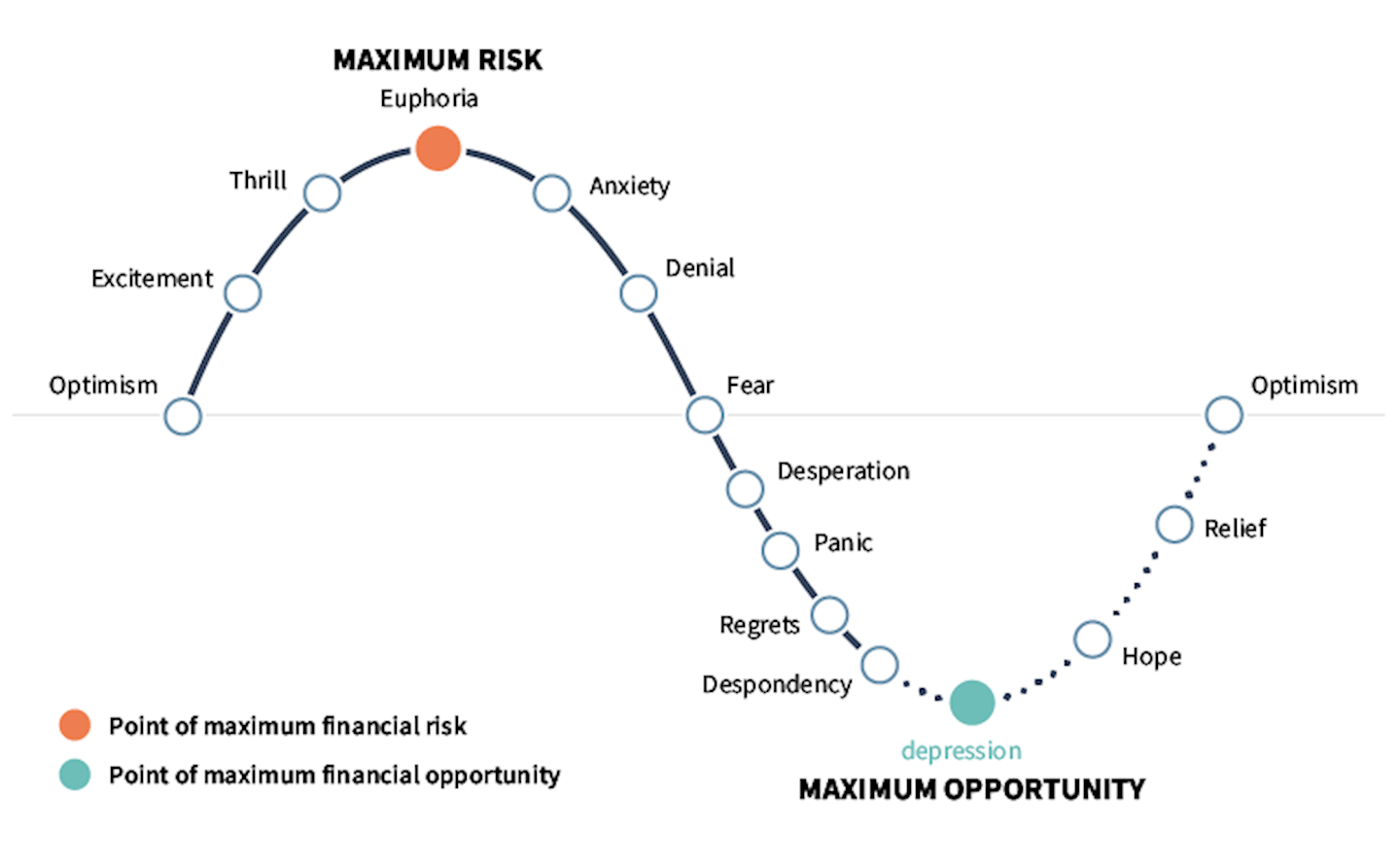You are using an outdated browser. Please upgrade your browser to improve your experience.
Article | 29 September 2022 | Investments
It’s natural for investors to be strongly influenced by current market trends. With a stack of recent tumultuous events – the War in Ukraine, rising interest rates, high inflation – it’s understandable that previous feelings of euphoria when markets were moving higher may have turned to feelings of fear and desperation, with some investors considering heading for the exits.
However, volatility in the markets is normal, and it’s important to keep in mind long-term investment plans rather than changing strategy based on short term movements in the markets. In fact, instead of panicking and seeing a downturn in the markets as a time to sell, they can potentially present good buying opportunities. The illustration below shows how investor emotions can change during different points of financial risk and opportunity as the markets move.

Source: Capital Group 2022: Don’t panic; Managing Market Driven Emotions.
‘Anchoring’ happens when investors rely on a specific number, such as the value of their investments at a given time, or a stock market peak, as a reference point for making future investment decisions. This can result in them becoming unduly pessimistic about their portfolio because of how far the market may have moved and can lead them to make hasty decisions that aren’t in their best interest in the long run.
It’s important to keep in mind long term goals and try to avoid making decisions based on short term circumstances. Remember that whilst stock markets may have fallen from a recent peak, over time they have risen steadily.
Research shows that humans tend to feel losses much more acutely than gains. Often, this can result in behaviour known as ‘loss aversion’ and may lead investors to make decisions that aren’t in their best interest, for example, by reacting to a downturn by shifting their portfolio into more low-risk investments. These may temporarily stem losses but offer little in the way of growth.
Source: Capital Group, 2022
Investors should remember that periods of ups and downs are part of the normal market cycle. These ‘losses’ they see during a down period are only realised if they sell their investments. Although it can be difficult, investors should try not to be too afraid when they see the value of their investments reduce over the short term and again keep in mind their long-term investment goals.
3886 KB | PDF
From the importance of diversifying your portfolio to a five-point investment checklist, this guide looks at the things to consider when investing through periods of volatility in the markets.
Download